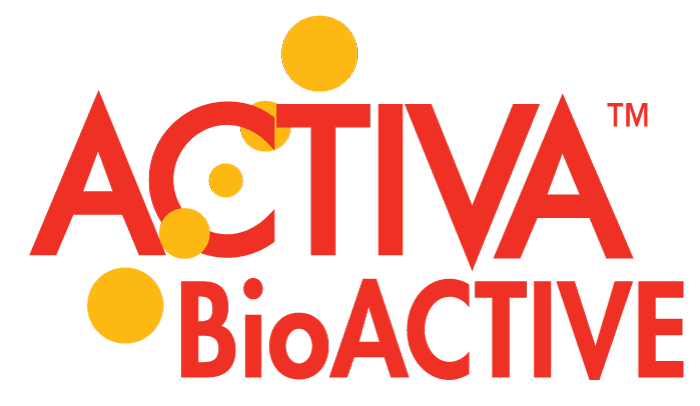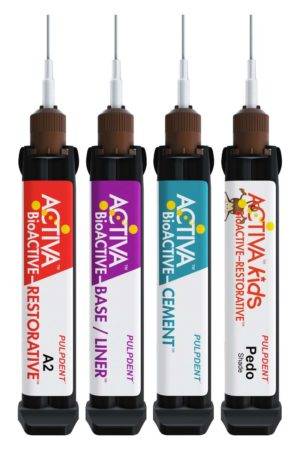
ACTIVA™ BioACTIVE-RESTORATIVE™

Restauration – Dual Cure – Haute viscosité – Forme/Construction – Fluor, Calcium & Phosphate
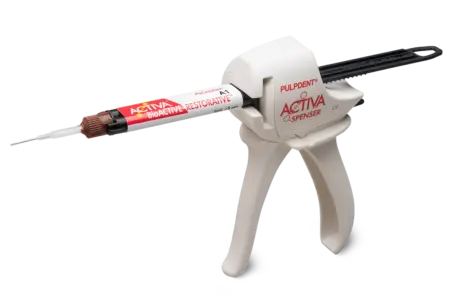
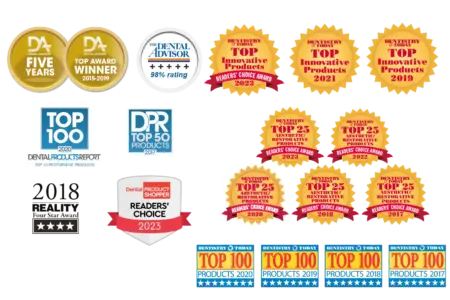
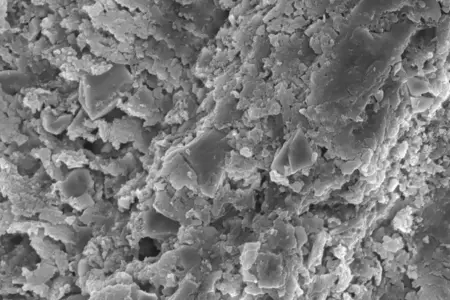
Des restaurations plus efficaces et de meilleurs résultats pour les patients
Restauration bioactive très esthétique, sans BPA, qui protège* en permanence contre les micro-infiltrations et les caries secondaires – De la classe I/II et du bulk-fill à la classe V, ACTIVA™ BioACTIVE-Restorative est une option de choix pour les traitements quotidien et la gestion des caries.
* ACTIVA-BioACTIVE libère des ions bénéfiques de fluor, de calcium et de phosphate tout en scellant physiquement le matériau et la dent par la formation de cristaux d’apatite, protégeant ainsi contre les micro-infiltrations, la cause principale des caries secondaires et des caries récurrentes.
Des technologies plus intelligentes, cliniquement prouvées pour votre bénéfice et celui de vos patients

RÉSISTE AUX CONTRAINTES, DISSIPE LA FORCE
La technologie des monomères élastomères brevetée MODULUS™ est intégrée à la chimie de base de la résine et confère une résistance à la fracture par la dissipation de la force et résiste au stress de rétrécissement de la polymérisation – conférant une plus grande stabilité physique et des marges exceptionnelles.

Défense* BioACTIVE™ contre les caries secondaires
La matrice de résine ionique Ion-X™ aide à alimenter la formation de cristaux d’apatite de scellement marginal par la libération et la recharge soutenues de calcium, de phosphate et de fluor, tout en travaillant continuellement à la neutralisation du pH et à la lutte contre les attaques acides.

DYNAMIQUE DE TRAVAIL HYDROPHILE permettant de réaliser des restaurations difficiles en situation réelle
La technologie WETBOND™, grâce à un monomère phosphate acide exclusif (M1P) et à une matrice hydrophile exclusive, conduit à un meilleur scellement chimique tout en permettant des restaurations réussies dans des conditions bucco-dentaires difficiles.
PROPRIÉTÉS CLÉS :
Dual Cure – Haute viscosité – Placement précis – Pour toutes les indications cliniques – Cliniquement prouvé – Risque minimisé de sensibilité postopératoire
Gestion polyvalente des caries au quotidien
Remplissage en masse de Classe II (Bulk Fill)
Étude de cas : Mise en place rapide dans un environnement humide chez un enfant à l’aide d’ACTIVA™ KIDS BioACTIVE-RESTORATIVE™
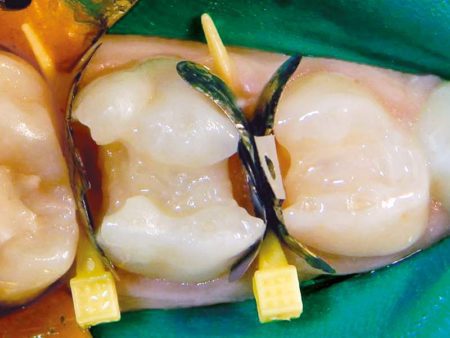
Dents préparées
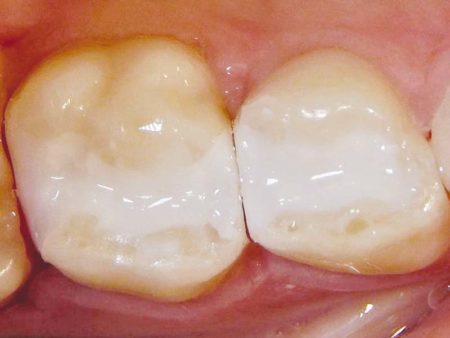
Dents restaurées avec ACTIVA (teinte Pédo)
Photos du Dr. Mark Cannon
Hydrophile et idéal pour les Classes V
Étude de cas : Réparation des lésions cervicales sensibles
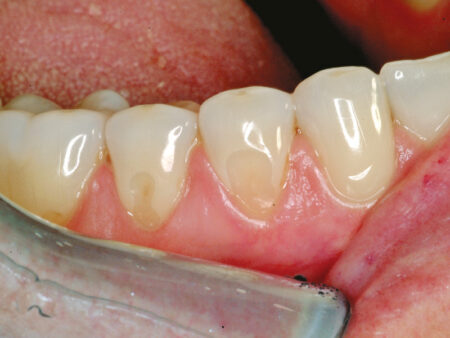
Lésions cervicales
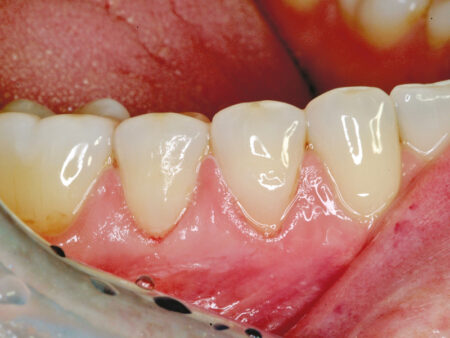
ACTIVA assure la bioactivité et le confort du patient
Photos du Dr. C. H. Pameijer
Reconstitution de moignons
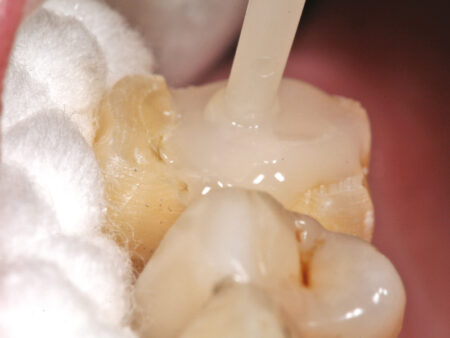
ACTIVA est utilisé pour construire le moignon d’une molaire très abîmée.
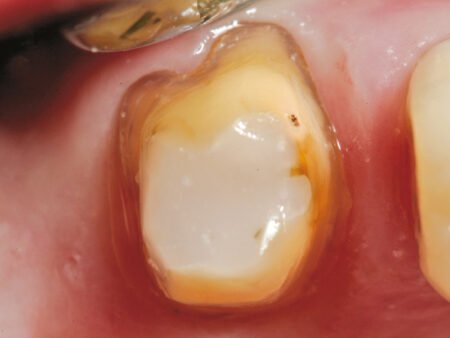
La dent est prête à recevoir une couronne.
Photos du Dr. Robert Lowe
Les Drs DiTolla et Bergeron discutent de la dentisterie bioactive mini-invasive pour les pratiques quotidiennes
Dans cette vidéo, le Docteur Brittany Bergeron, examinera de manière critique une variété d’études de cas réels, peu invasifs, utilisant des restaurations bioactives et discutera de la science actuelle de la reminéralisation, des produits dentaires respectueux de l’humidité, des propriétés de manipulation des matériaux « actifs » et des utilisations pratiques et quotidiennes des ciments bioactifs, des composites et des fonds de cavité.
Le Dr Barquero pose 9 restaurations ACTIVA en un seul rendez-vous
Le Dr Delfín Barquero montre comment il a utilisé ACTIVA BioACTIVE pour réaliser neuf restaurations en un seul rendez-vous.
PROPRIÉTÉS MÉCANIQUES:
Des tests indépendants montrent que la résistance à la compression, l’usure et la durabilité sont comparables à celles des principaux composites. La résistance à la fracture est supérieure à celle des composites traditionnels, des verres ionomères modifiés par la résine (RMGI) et des verres ionomères (GI).
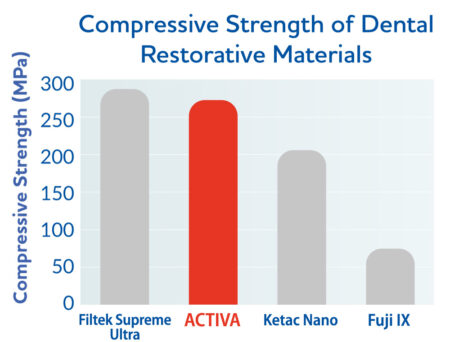
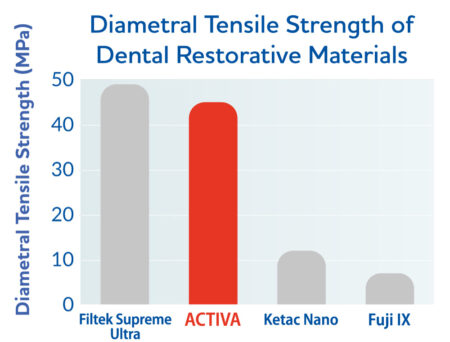
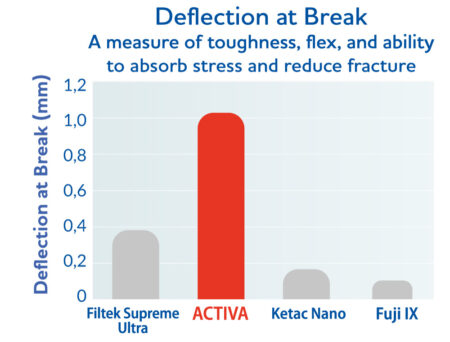
*Ne sont pas des marques déposées de Pulpdent Corporation
LIBÉRATION / RECHARGE DE CALCIUM, DE FLUOR ET DE PHOSPHATE :
Les graphiques suivants montrent la libération et la recharge de calcium, de phosphate et de fluorure à partir de quatre matériaux de restauration. ACTIVA BioACTIVE-RESTORATIVE (ainsi que le reste de la famille ACTIVA BioACTIVE) présente une libération et une recharge continues de ces minéraux essentiels, qui sont naturellement présents dans la salive et sont complétés par des sources alimentaires et la libération d’ACTIVA. Cette diffusion d’ions n’est possible qu’avec des matériaux capables de transporter de l’eau. Les matériaux hydrophobes traditionnels sont passifs et n’ont pas la capacité d’avoir ce comportement dynamique.
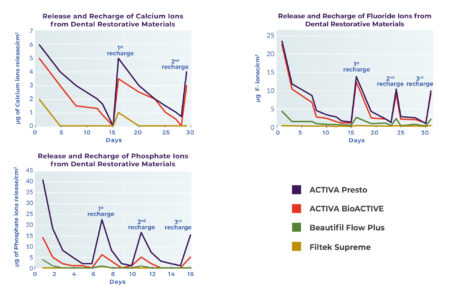
Source: Tests réalisés par Pulpdent
Références :
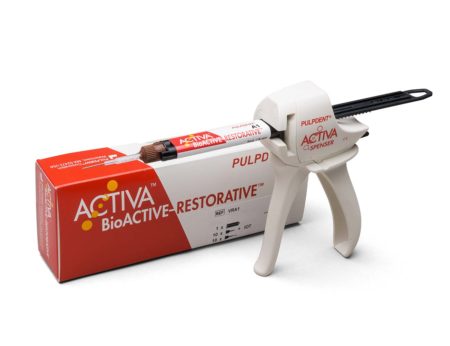
VR* – Kit : 1 seringue de 5 ml / 8 g + ACTIVA Spenser + 20 embouts
* Teintes : A1, A2, A3
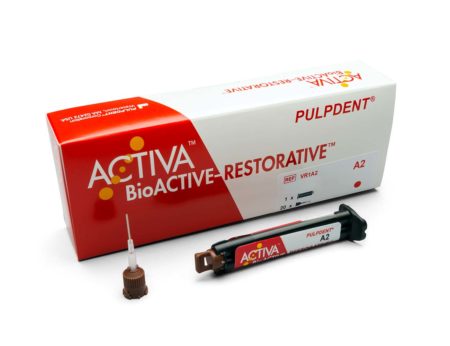
VR1* – Seringue de 5 ml / 8 g + 20 embouts (A20N1)
* Teintes : A1, A2, A3, A3.5
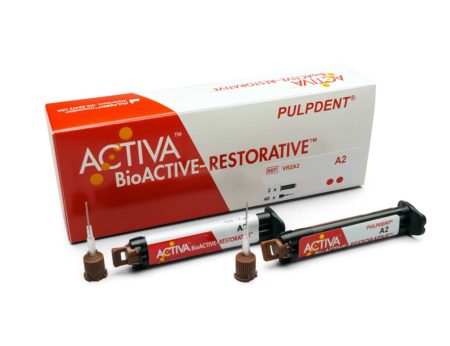
VR2* – 2 seringues de 5 ml / 8 g + 40 embouts (A20N1)
* Teintes : A1, A2, A3, A3.5
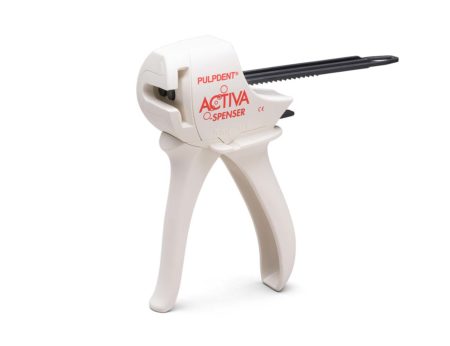
DS05 – ACTIVA Spenser Pistolet mélangeur 1:1 pour seringue de 5 ml
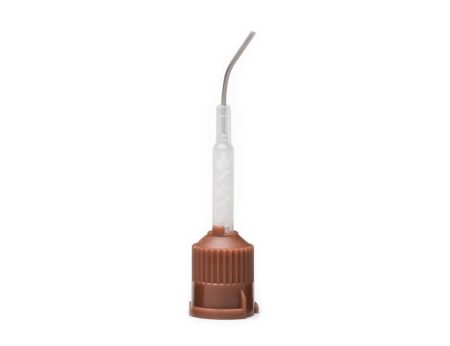
A20N1 – 20 embouts Automix directionnels, 20 ga

A50N1 – 50 embouts Automix directionnels, 20 ga
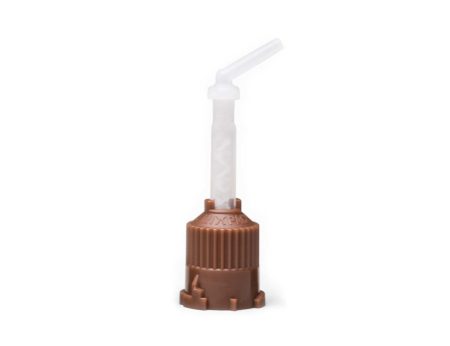
AD20T – 20 embouts Automix transparents intra-oraux, courts

AD50T – 50 embouts Automix transparents intra-oraux, courts
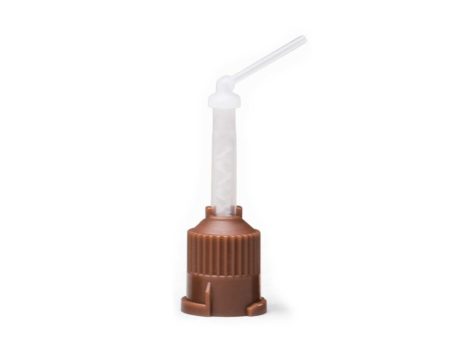
AD20R – 20 embouts Automix transparents intra-oraux, longs

AD50R – 50 embouts Automix transparents intra-oraux, longs
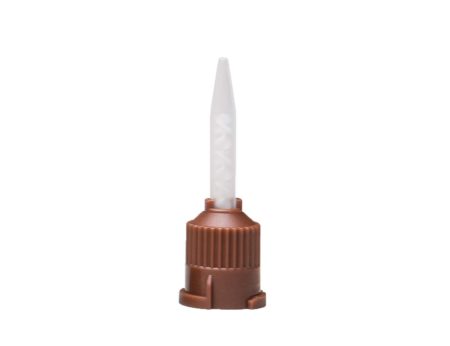
AS20 – 20 embouts Automix transparents

AS50 – 50 embouts Automix transparents




